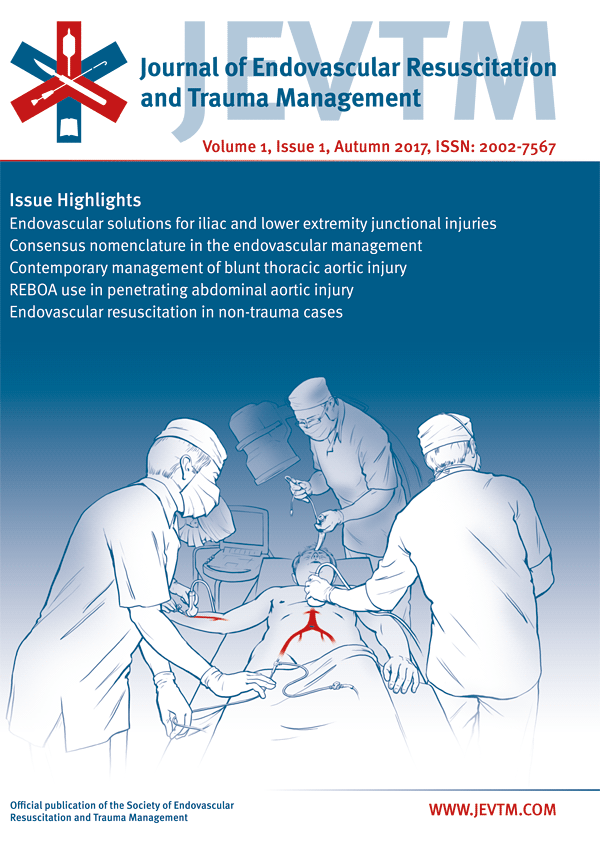Vascular Damage Control Approach Using Direct Deployment of Self-Expandable PTFE Covered Stent as an Alternative to Intra-Arterial Shunt
DOI:
https://doi.org/10.26676/jevtm.v1i1.27Keywords:
Abdominal Vascular Injury, Gunshot Wound, Endovascular, Stent, Damage Control, Intravascular ShuntAbstract
The use of intravascular shunts for damage control purposes has been well described both in the battlefield and in the civilian environment. In this report, we present a case in which a self-expanding polytetrafl uoroethylene (PTFE) stent graft was used as an alternative to traditional damage control intra-arterial shunt to successfully control bleeding and reestablish arterial flow in the aortoiliac segment. A 50-year-old male presented in extremis after sustaining multiple abdominal gunshot wounds. After resuscitative thoracotomy, laparotomy demonstrated transection of the right common iliac artery at its origin, destructive pancreatoduodenal injury with associated superior mesenteric vein injury, and multiple small bowel and colonic injuries. Because of the location of the injury at the aortoiliac junction, temporary intra-arterial shunt placement was not possible as no residual iliac cuff was available to secure a tie around the shunt proximally. A self-expanding PTFE stent graft was introduced and directed across the injury under direct visualization and deployed to bridge the defect from the aortic bifurcation to the right common iliac artery. After deployment, the stent was hemostatic and pulses were palpable in bilateral iliac and common femoral arteries. The associated intra-abdominal injuries were addressed and the abdomen packed and temporarily closed. Total operative time was 65 minutes. After a 4-hour period of resuscitation in the ICU, the patient became hemodynamically unstable and was re-explored. Diffuse bleeding was identified in all raw surfaces of the retroperitoneum, abdominal wall and chest wall. The area of the stent was hemostatic. The right colon was massively dilated from intraluminal bleeding, so a right hemicolectomy was performed. Despite resuscitative eff orts and more than 100 units of blood products the patient expired. In this report, we described the use of direct endovascular repair using a self-expanding PTFE stent graft in the aortoiliac location as an alternative to temporary intra-arterial shunt placement. This technique allowed quick hemostasis and reestablishment of arterial flow in an area in which traditional intra-arterial shunts would not be feasible.
Published
How to Cite
Issue
Section
License
Copyright (c) 2017 Journal of Endovascular Resuscitation and Trauma Management

This work is licensed under a Creative Commons Attribution 4.0 International License.
Authors of content published in the JEVTM retain the copyright to their works.
Articles in the JEVTM are published under the terms of a Creative Commons CC BY 4.0 license, which permits use, downloading, distribution, linking to and reproduction in any medium, provided the original work is properly cited.




